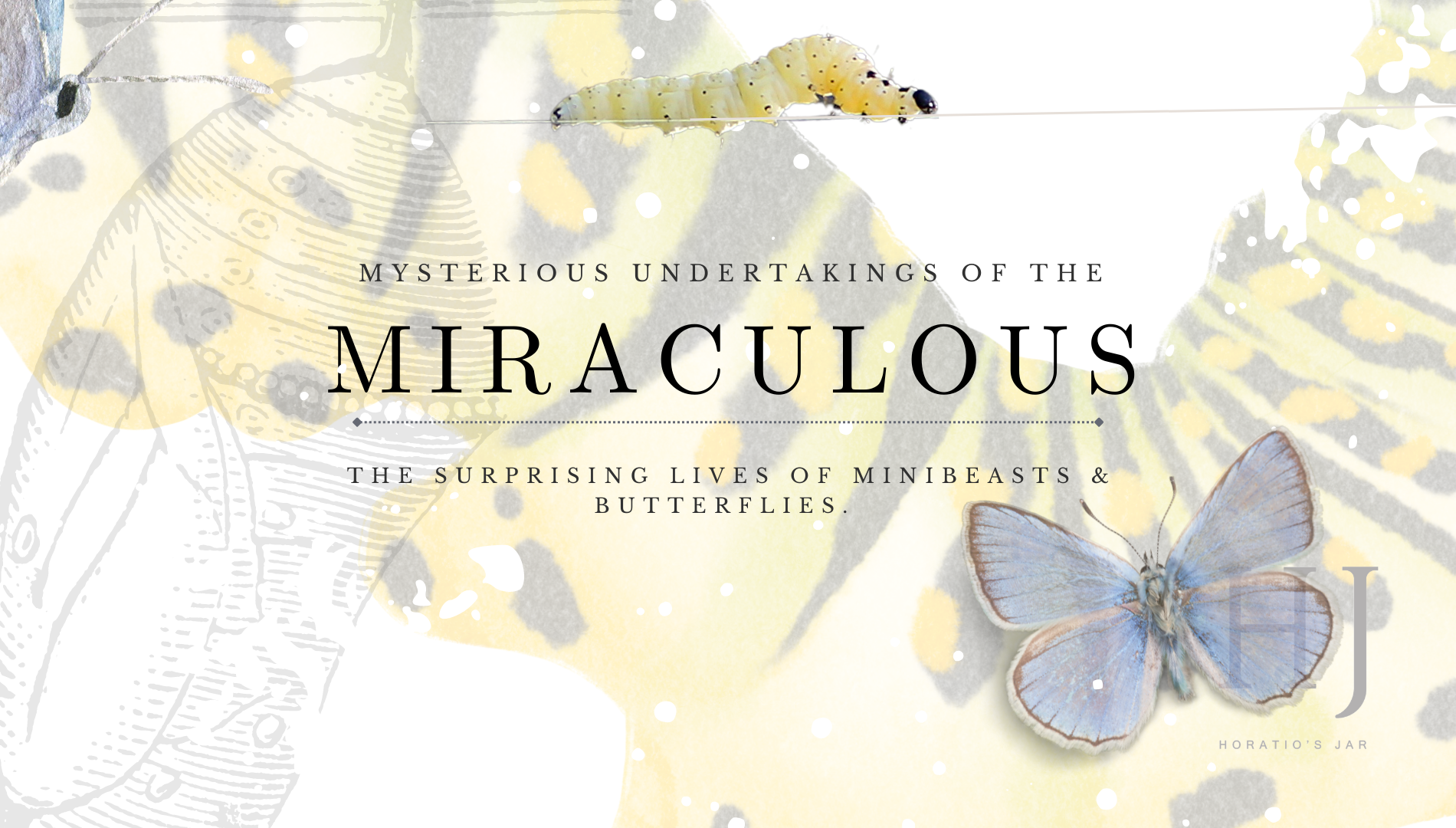Published by: Digital Schools
Mysterious Undertakings of The Miraculous –
The Surprising Lives of Mini- Beasts & Butterflies.
It would seem that I have been roaming the world utterly ignorant of basic and essential information, potentially misinforming tiny children of specific facts of life along my way.
It is certainly not my fault I had it all so wrong. It is what I learned as a child; “caterpillars turn into butterflies inside a cocoon”.
![]()
Caterpillars don’t make cocoons, nor do they sprout wings, grow a proboscis and curly head-wear from a body that shrunk in size on a two-week hiatus from eating so much food.
It is far more miraculous, exciting and mind-boggling – how a caterpillar becomes something entirely other than itself.
![]()
Metamorphosis
I hardly know much about anything, but one thing I thought, well, at least assumed was right, was that a butterfly is a caterpillar that transforms itself inside a cocoon made from spidery-like silk. Sometimes sticks, or what have you, are plucked together to make the little hideaway where the transformation takes place.
The bug re-emerges two weeks later, a slender and delicate winged beastie, ready to take flight and mingle in the flower fields with all the other winged pollinators we are utterly reliant on for survival.
But my assumptions were wrong; this is not the whole story.
This article is set to clear up some serious misunderstandings and bring to the table the extraordinary life of a butterfly.
![]()
How do caterpillars turn into butterflies?
More from Imagine This – Wed 15 Jun 2022
https://www.abc.net.au/kidslisten/imagine-this/how-caterpillars-turn-butterflies/13928970
![]()
Beautiful Wonderment.
Beautiful, floaty, angelic little things that are harmless, slow-moving and often brightly coloured – butterflies capture the whole world’s attention and imagination and have done so for generations.
Butterflies are a source of joy, curiosity, laughter and magic in the world – drawing our attention into their brilliant little worlds, inside the blooms of hibiscus or on the tips of wild lavender, in the setting sun, their paper-like wings illuminate, and magic dances with them.
It would not be believable to think a person who has not stopped to gaze a while at a butterfly would exist.
They may appear to live a simple existence, a happy, pretty two weeks, floating about in the wind, landing on flowers to eat, and taking time out to reproduce clutches of eggs that will become the successive generation of caterpillars – who transform to butterflies – and that is it. Voila, life cycle complete!.
But nothing is ever really that simple, especially regarding nature and the mysteries of life. And as custodians of the natural world and those in charge of catalysing the food we eat, there is no way to deny there is much more to a butterfly than wafting about in the twilight haze or fritting about in flower beds.
![]()
![]()
Guest Contributor: Emily Rack
Business Name: Horatio’s Jar
Publisher: Digital Schools
Emily Rack is a freelance creative writer and researcher, visual content creator, and designer. She is the head of the content production, publication – and editing for Upschool+ Guest Contributors -, and Horatio’s Jar is her content production agency and wellbeing school.
Emily has dedicated her life to researching and understanding matters of the mind, body-, and the human experience. Her discoveries and research are focused on cultivating tools and dialogue that encourage us to live in peace and harmony here on earth.
Her current focus is the environment and human connectivity, conservation, environmentalism, botany, biology-, and the practice of ‘Nature Bathing’. Emily is a writer, digital content creator, seasoned photographer-, and visual artist.
——-
PUBLISHER’S DISCLAIMER: The publisher of this blog post (Digital Schools PTY LTD) works in partnership with the school as a 3rd party provider to help build and maintain the school website. Digital Schools sources a range of experts who provide products and/or services to educational institutions and we work with them to produce and publish topical information in the form of blog posts that we think may be relevant, interesting or topical to families within the community. The views, opinions and content listed in this blog post are that of the guest contributor and/or publisher (Digital Schools). It should be noted that whilst the publisher and guest contributors are acting with the best intentions and in the best interests of the school and their community to provide helpful or interesting information, sometimes the content may not necessarily reflect the views of the school.
The information in this blog post is not meant to be used, nor should it be used, to diagnose or treat any medical condition. For diagnosis or treatment of any medical problem, consult your own physician. The school and the publisher of this blog post are not responsible for any person reading or following the information in this article who may experience adverse effects.
Any references to external websites or sources are provided for informational purposes only and do not constitute an endorsement by the school or publisher in any way and the publisher and/or school cannot guarantee the accuracy of the information listed.
If you have feedback on any content on this platform, you can submit it to the publisher using the feedback link provided at the bottom of this page.


